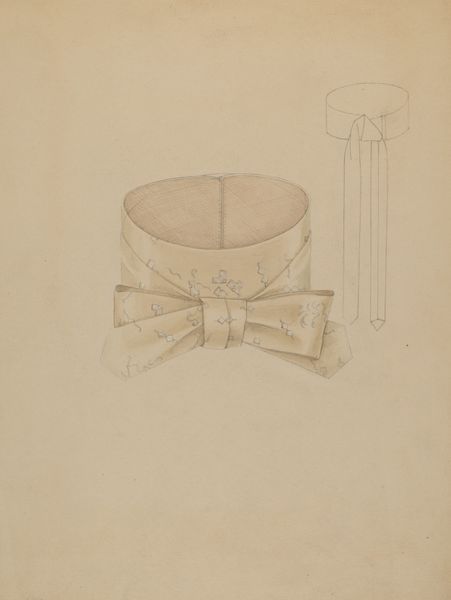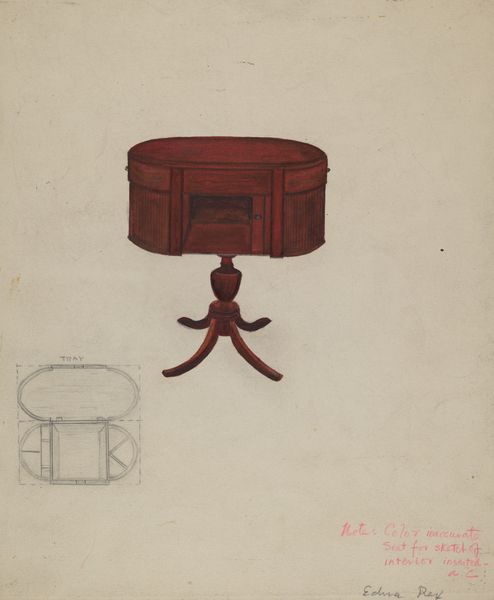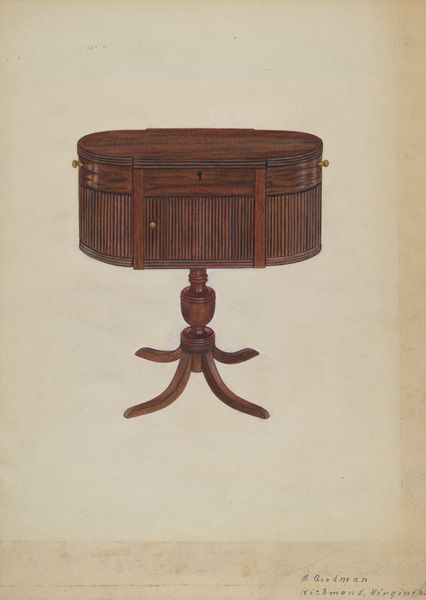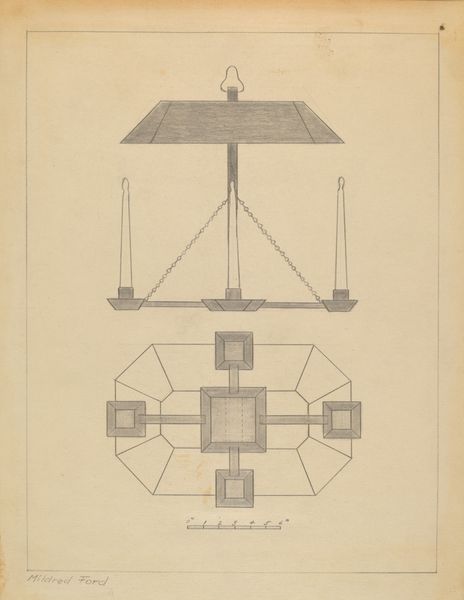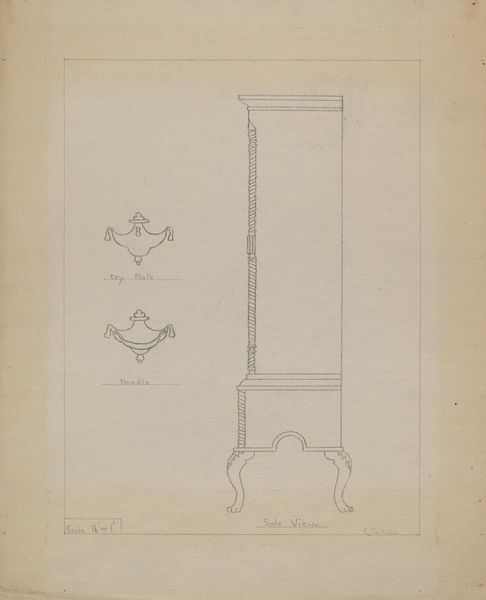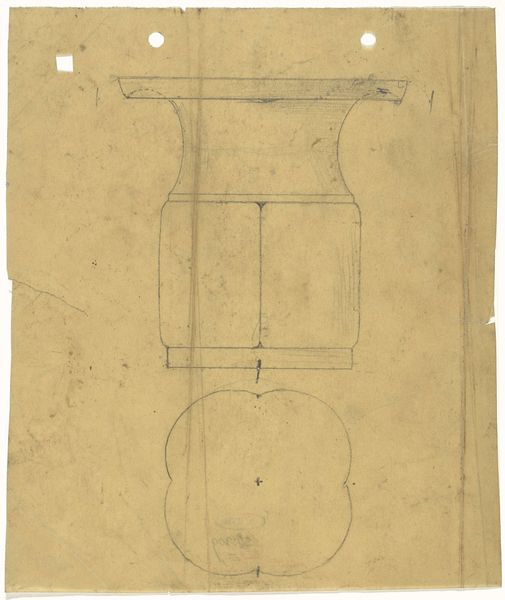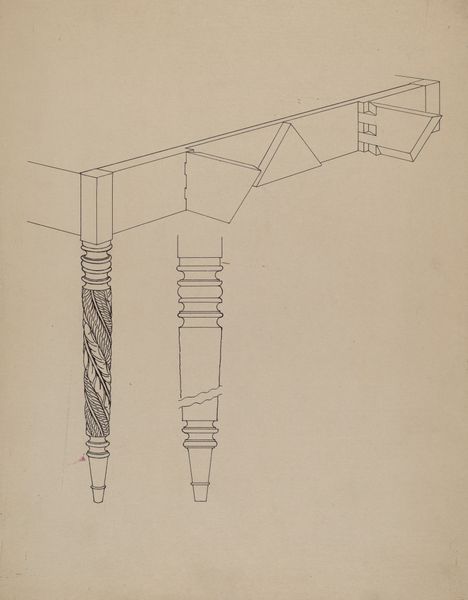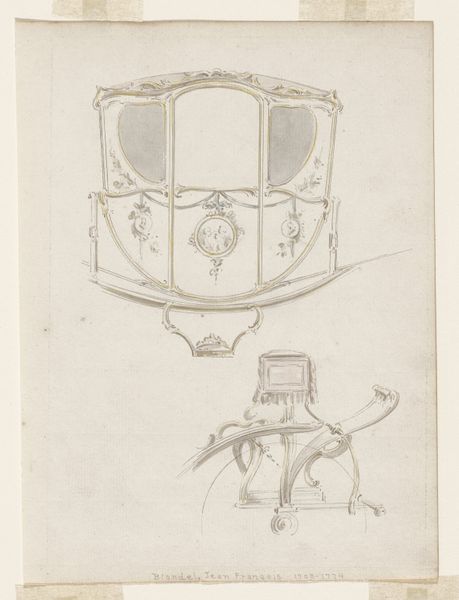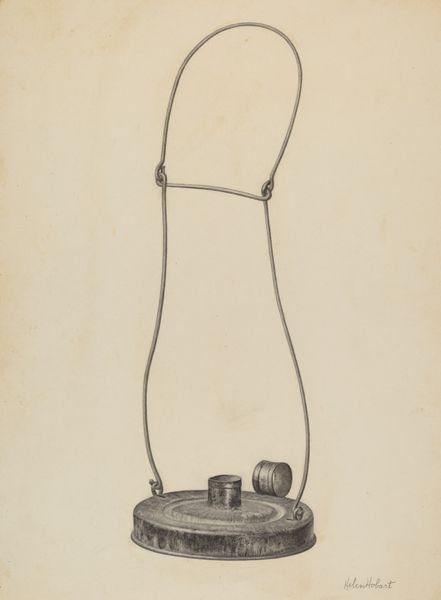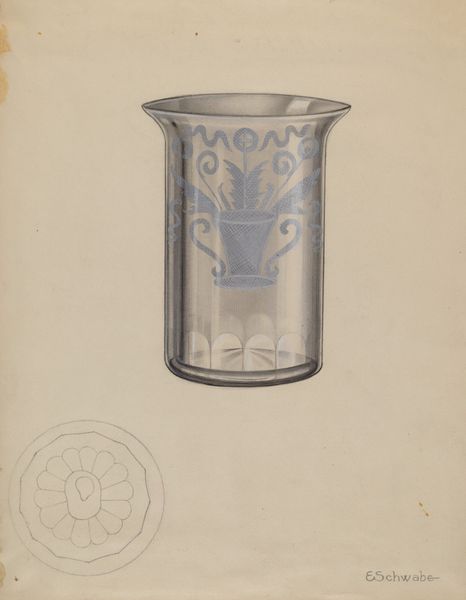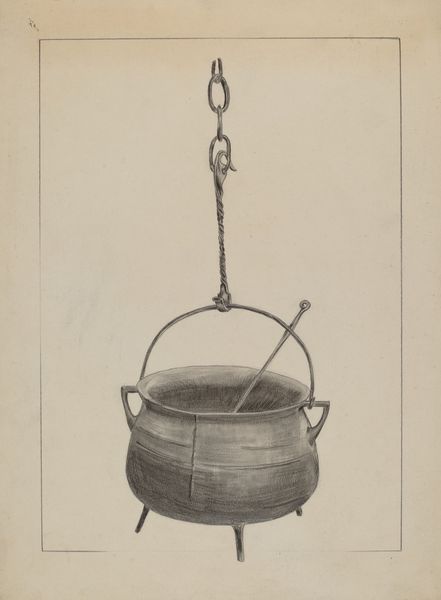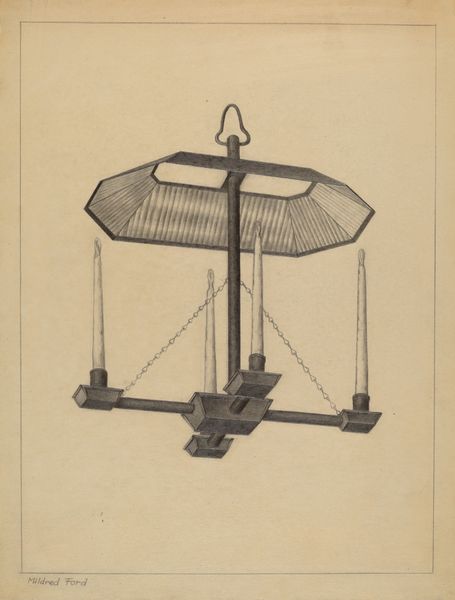
drawing, paper, pencil, graphite
#
drawing
#
paper
#
geometric
#
pencil
#
graphite
#
decorative-art
Dimensions: overall: 30.5 x 22.7 cm (12 x 8 15/16 in.) Original IAD Object: 29 1/2"high; 28 3/4"long; 13 1/2"deep (cabinet)
Copyright: National Gallery of Art: CC0 1.0
Curator: Before us, we have a drawing entitled "Duncan Phyfe Sewing Cabinet," crafted around 1936. The artist, Mattie P. Goodman, used pencil and graphite on paper. Editor: Immediately striking is the sheer verticality emphasized by those repetitive lines. The composition almost creates a visual hum. Curator: The drawing style aligns with decorative arts traditions, wouldn’t you say? Notice the precision in depicting the cabinet’s geometry—the ovoid top, the fluted cylindrical body. Editor: Of course, and Goodman’s choice of subject evokes a very specific demographic of the era, reflecting an intimate scene of domesticity. It also raises questions of authorship—who gets to be an artist, and whose stories are preserved. Women's creative labor, so often overlooked. Curator: Yes, but the focus here, I think, is on the construction itself. Observe the careful rendering of light and shadow. This is a celebration of form, showcasing the elegance and symmetry inherent in Phyfe's designs. We should recognize Goodman’s command over line work and shading. Editor: But doesn't this detailed depiction almost elevate the status of these items, while simultaneously distancing it from its original utility? Curator: I agree to an extent; however, I see the artwork’s aesthetic function in offering insights into historical designs and craftsmanship. It acts as a document, carefully articulating Phyfe’s stylistic principles. Editor: Fair point. Goodman uses artmaking to explore gender roles but simultaneously replicates conventional, structured designs and spaces in which such things are located. This sewing cabinet reflects the intersection of social roles, aesthetics, labor and art, each one existing inside one another, literally built into the others. Curator: It truly is a visually fascinating object that also manages to pose interesting theoretical and historical issues. Thank you for drawing that to my attention. Editor: Always. Thank you, for taking the time to engage with this work.
Comments
No comments
Be the first to comment and join the conversation on the ultimate creative platform.
